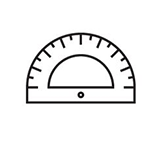삼엽충(Trilobite) Peronopsis interstrictus 
| 국내/해외배송 | |
|---|---|
| 배송비 방법 | 택배 |
| 배송비 | 4,000원 (50,000원 이상 구매 시 무료) |
| 수량 |
|
| 상품 정보 | 가격 | 삭제 |
|---|---|---|
| [총 상품금액(수량)] 0 (0개) | ||
화석명 : 삼엽충 화석
Name(학명): Peronopsis interstrictus
ORDER: AGNOSTIDA Suborder: Agnostina Family: Peronopsidae
Age(시대): Middle Cambrian
Formation(지층): Wheeler Formation
Location(원산지): Millard County, Utah
Size: Largest trilobite is 1.2cm long
내용 : 여기에 있는 multiple trilobite plate은 고생대 캄브리아 중기 때의 화석으로 미국 유타주의 대표적인 화석이다. 이 삼엽충은 대부분이 저서성인 것에 비해 부유성인 것으로 알려지는 삼엽충으로 매우 의미가 있는 화석이다.
Agnostida (the agnostids) is an order of trilobite. These small trilobites first appeared toward the end of the Early Cambrian and thrived in the Middle Cambrian. They are present in the lower Cambrian fossil record along with trilobites from Orders Redlichiida, Corynexochida, and Ptychopariida. The last agnostids went extinct in the Late Ordovician.
The Agnostida are divided into two suborders -- Agnostina and Eodiscina -- that are then divided into a number of families. As a group, agnostids have pygidia (tails) that are so similar in size and shape to their cephalons (heads) that it is difficult to distinguish which end is which. Most agnostid species were eyeless.
The systematic position of Order Agnostida within Class Trilobita remains uncertain, and there has been continuing debate whether they are trilobites or a stem group. The challenge to the status has focused on the Agnostina partly because juveniles of one genus have been found with legs greatly different from those of adult trilobites, suggesting they are separately descended from Crustaceans. Other researchers have suggested, based on cladistic analyses, that Eodiscina and Agnostida are closely united, and that the Eodiscina descended from the trilobite Order Ptychopariida.
Scientists have long debated whether the agnostids lived a pelagic or a benthic lifestyle. Their lack of eyes, a morphology not well-suited for swimming, and their fossils found in association with other benthic trilobites all suggest a benthic (bottom-dwelling) mode of life. They likely lived on areas of the ocean floor that received little or no light and fed on detritus that descended from upper layers of the sea to the bottom. In contrast, their wide geographic dispersion in the fossil record is uncharacteristic of benthic animals, suggesting a pelagic existence. The thoracic segment appears to form a hinge between the head and pygidium allowing for a bivalved ostracodan-type lifestyle. Furthermore, the orientation of the thoracic appendages appears ill suited for benthic living.
Agnostina are generally referred to simply as "agnostids" even though they probably should be called "agnostines".
From Wikipedia













 확대보기 및 상세정보
확대보기 및 상세정보